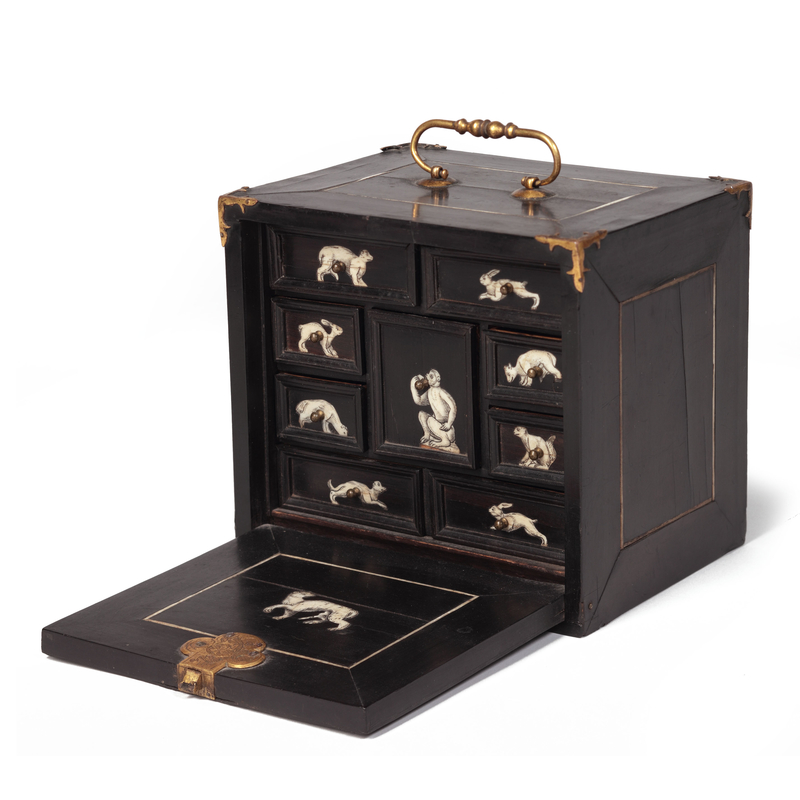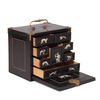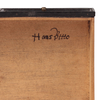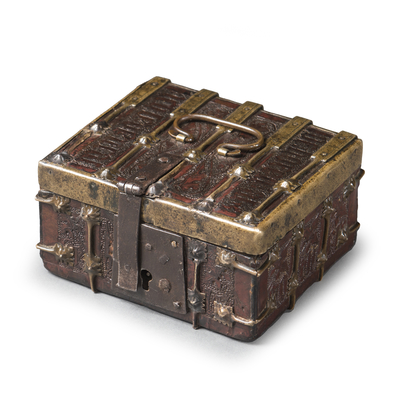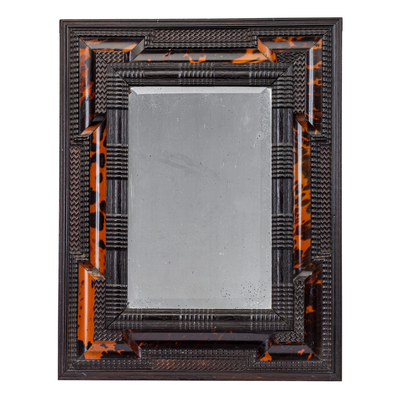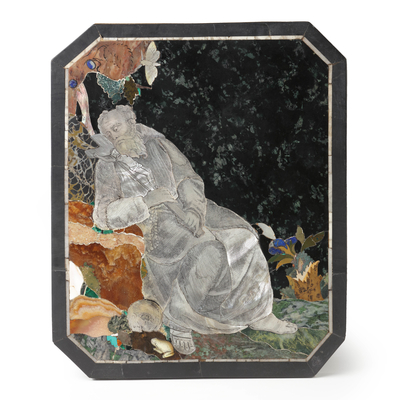Miniature collector's cabinet
Global shipping available
- Origin
- Possible Strasbourg
- Period
- First half 17th century
- Material
- Pear, ebony, glued and inlaid with engraved ivory, gilded brass
- Height
- 14 cm
- Width
- 15 cm
- Depth
- 11.5 cm
- Literature
O. Impey, A. MacGregor, ‘The Origins of Museums: The Cabinet of Curiosities in Sixteenth- and Seventeenth-Century Europe (1985), in: S. Staniforth (ed.), Historical Perspectives on Preventive Conservation, Los Angeles 2013, pp. 78-82.
Questions about this object?
Please use one of the contact options below:
Description
This miniature collector’s cabinet is made of a pearwood body, glued with ebony and decorated with engraved ivory. The outside of the cabinet is decorated with small bands of ivory forming squares. The corners of the cabinet are finished with gilded bronze corner pieces, and the trefoil lockplate is engraved. On top of the cabinet is an oval handle. The eight drawers and the closing lid are decorated with inlaid ivory animals; the central drawer has a sitting ape that is eating some fruit, and the other drawers depict hares, squirrels and dogs.
A striking and intimate detail of this miniature collector’s cabinet is the names and initials that are written on the backs of the drawers in ink and pencil. These (Rosina, Wilhelm, Isaac Bitto, Hans Bitto, Friedrich Ernst, ISB, WB, AB, MB, IB, IHB & DB) corresponded with the children of the Strasbourg family Bitto. Father and merchant Daniel Bitto, born before 1586, married Ottilia Kauw in 1606. They welcomed their first child in 1607, and the children mentioned on the back of the drawers were born between 1609 and 1626.
The cabinets made from the latter half of the 16th century are derived from the Spanish ‘escritorio’. This is a rectangular, box-shaped portable piece of furniture with a table-like structure, with drawers for writing utensils, papers, etc. This furniture type developed fast at the end of the middle ages with the spread of literacy: it was not just a useful object, but also indicated that the owner was cultured and capable of writing.
Cabinets like this collector’s cabinet were made for the storage and display of art and curiosities. The owner of the cabinet thus showed his wealth and knowledge of the world. The collections of objects in a cabinet of curiosity could be divided into artificialia (man-made works of art and antiques), naturalia (natural objects such as shells and stones), exotica (exotic animals and plants), and scientifica (scientific instruments). Over time, these cabinets grew into "kunst- und wunderkammers", physical spaces in which art and curiosities were exhibited. These rooms filled with private collections were the precursors of the first museums.
Cites no. 22NL307698/20
